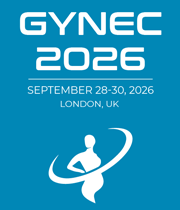Title : Demographic characteristics of women with uterine leiomyomas: A comparative analysis of the all of us research program participants
Abstract:
Background. Uterine leiomyomas are the most common benign tumors in women of reproductive age, affecting approximately one in four women. Despite their high prevalence, the demographic and geographic prevalence trends remain understudied. Building on a prior Florida-based analysis, this study assesses patterns among adult women in the US.
Methods. The NIH All of Us Research Program includes data on age, race, ethnicity, state of origin, leiomyoma location (i.e., subserous, intramural, submucous) and year of diagnosis, body mass index (BMI), socioeconomic status, and pregnancy history. We compared age differences (t test), race and ethnicity (chi-squared test), and age by fibroid location (ANOVA with Tukey post hoc correction), and race/ethnicity by fibroid location (chi-squared test). Significance was set at ?=0.05.
Results. The analysis included 393,780 women, 19,912 [5.06%] of whom presented with fibroids. Women with fibroids were significantly older than those without (mean [SD] age of 59.1 [12.4] vs. 53.4 [16.8] years; P<0.001). The distribution of fibroids by race and ethnicity was statistically significant (P<0.001), with a higher proportion of white (43.2%) and non-Hispanic (76.8%) women. Only 5800 (29.3%) leiomyomas specified an anatomic site, of which 55.7% were intramural, 26.7% were subserosal, and 17.6% were submucosal, with significant differences by age--subserosal fibroids occurred in younger women (mean [SD] = 55.6 [13.1] years; F [2]=27.22; P<0.001). Race and ethnicity were also significantly associated with fibroid location. The states with the highest prevalence rates (over 6%) were Massachusetts, New York, Wisconsin, Pennsylvania, and Michigan.
Conclusion. These findings highlight demographic and geographic disparities in fibroid distribution and prevalence rates, underscoring the need for targeted interventions to improve equitable care.




